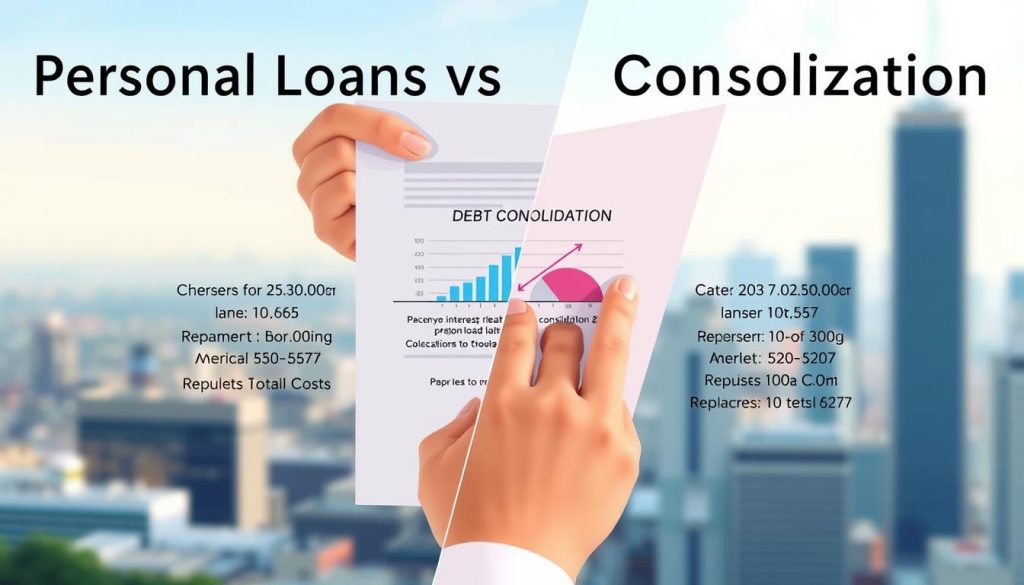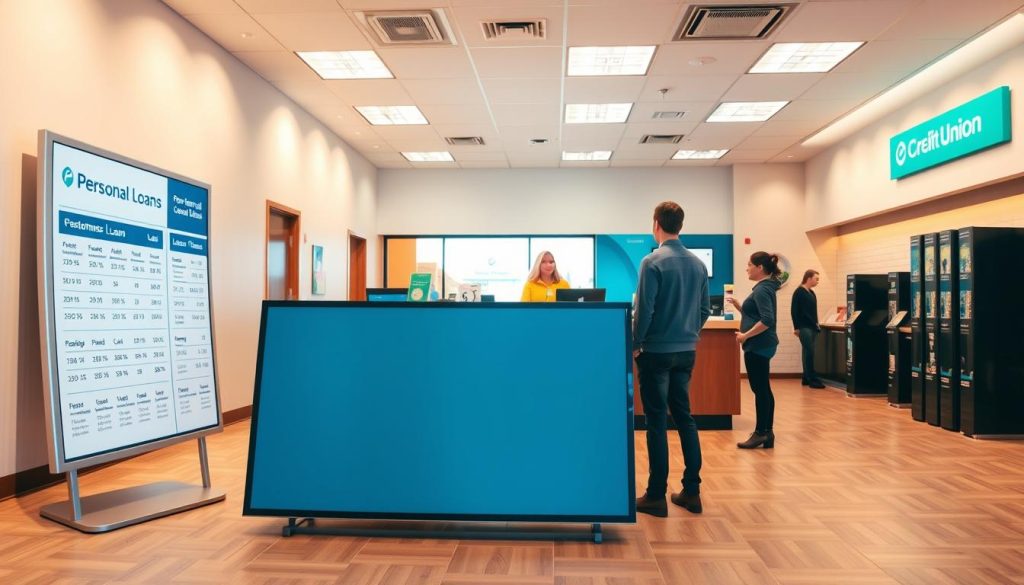Credit Union Personal Loan Rates: How to Find the Best APR
Credit Union Personal Loan Rates are a great place to start when finding affordable financing. Many lenders offer varying terms, but membership-based institutions often provide lower APR compared to traditional banks. For example, First Tech Federal Credit Union starts at 6.99% APR for qualified applicants, while Navy Federal ranges between 8.74% and 18.00% APR with no extra fees.
Your financial profile plays a big role in securing favorable terms. Factors like credit history and membership eligibility can widen or narrow your choices. Wells Fargo, for instance, offers relationship discounts but generally has higher starting APRs than credit unions.
Comparing multiple lenders ensures you don’t overpay. The difference between the lowest and highest APR could save thousands over the life of a loan. Always review eligibility requirements and repayment flexibility before committing.
Key Takeaways
- Membership-based lenders often beat traditional banks in affordability
- APR ranges vary widely (6.99%–18.00%) based on qualifications
- No-fee structures at some institutions increase savings potential
- Relationship discounts may apply for existing banking customers
- Loan amounts up to $50,000 are available through select providers
Introduction to Credit Union Personal Loan Rates
Membership-based financial solutions prioritize affordability through collective ownership models. Unlike traditional banks, these cooperatives return profits to members through better annual percentage rates and flexible repayment schedules.
How Cooperative Lending Works
These institutions operate as member-owned cooperatives. Borrowers access funds without collateral, with fixed interest rates that stay consistent for the entire repayment period. This stability helps budget-conscious individuals plan long-term expenses like home renovations or medical bills.
Advantages of Member-Focused Financing
Most cooperative lenders eliminate hidden charges like application or prepayment penalties. They also provide free financial education tools to help borrowers improve their credit health. Below is a comparison of common features:
| Feature | Member-Owned Institutions | Traditional Banks |
|---|---|---|
| Starting APR Range | 6.99% – 18.00% | 8.00% – 24.99% |
| Common Fees | None or low | Origination, late fees |
| Approval Factors | Income stability | Credit score |
Eligibility often depends on your employment history and debt-to-income ratio. Many cooperatives approve loans within 24 hours for qualified applicants, making them ideal for urgent needs.
In-Depth Look: Credit Union Personal Loan Rates
Understanding the mechanics behind your borrowing options can lead to smarter decisions. Two critical factors influence your repayment experience: the type of interest rate you secure and how lenders assess your financial reliability.
Fixed Versus Variable Rates Explained
Fixed-rate structures lock in your monthly payment amount for the entire repayment period. This shields you from market fluctuations, even if the Federal Reserve adjusts benchmark rates. While less common, variable options may start lower but carry uncertainty—payments could rise if economic conditions shift.
Most cooperative lenders prioritize stability over temporary savings. Their fixed-rate models appeal to budget-focused borrowers planning major expenses like home upgrades or medical bills.
Understanding the Impact of Credit History
Your financial track record plays a pivotal role in approval outcomes and pricing. Institutions typically reserve their lowest annual percentage rates for applicants with exceptional payment histories. About 10% of qualified borrowers meet this threshold.
Lenders often review employment consistency and existing account relationships alongside traditional scores. Those with weaker histories might need co-signers but could qualify for rate reductions by enrolling in automatic payments or demonstrating improved credit behavior.
Loan Features and Benefits Offered by Credit Unions
Choosing the right financial partner can unlock unique advantages tailored to your needs. Membership-driven organizations stand out through fee-light structures and customized solutions that adapt to diverse financial situations.
Competitive Rates and Flexible Terms
Many institutions remove common barriers like application charges or prepayment penalties. For example, Navy Federal operates with no origination fees, while First Tech Federal allows members to check potential rates without affecting their credit scores. Repayment schedules often range from 12 months to 7 years, letting borrowers balance monthly payments with long-term goals.
Member-Exclusive Perks and Support
Specialized programs like Career Kickoff Loans demonstrate how lenders cater to specific member groups. Military academy students can defer initial payments until after graduation. Around-the-clock support teams help members navigate options, from application questions to fund transfers between accounts.
Additional benefits include:
- 45-day payment deferrals on new agreements
- Automatic discounts for existing account holders
- Rate-lock guarantees during financial planning
Application Process and Eligibility Criteria
Securing funds through membership-based institutions has never been more accessible. Modern lenders offer multiple pathways to submit requests, catering to tech-savvy users and those preferring human interaction. Understanding the approval roadmap helps avoid delays.

Online, Phone, and In-Branch Options
Digital platforms dominate modern borrowing due to speed and convenience. Automated systems process most requests instantly, while branch visits allow detailed discussions about repayment strategies. Here’s how channels compare:
| Method | Availability | Key Benefit |
|---|---|---|
| Online Portal | 24/7 | Instant rate checks |
| Mobile App | On-demand | Document uploads |
| Phone | Business hours | Live support |
| Branch | Appointment-based | Customized advice |
What Lenders Look for in a Credit History
Financial institutions prioritize consistent payment patterns over isolated high scores. They analyze how you’ve managed debts during economic downturns or job transitions. Utilization below 30% signals responsible management.
Employment stability matters as much as income levels. Lenders typically request three months of pay stubs or tax returns. Existing account holders often receive preferential terms—Wells Fargo reduces rates for those with active checking relationships.
Debt-to-income ratios below 36% improve approval odds. Some organizations accept co-signers if your history has minor blemishes. Always verify membership requirements before applying, as affiliations vary by institution.
Calculating Your Estimated Monthly Payment
Smart budgeting begins with knowing exactly what you’ll owe each month. Modern tools simplify this process, letting you explore different scenarios before signing any agreements.
Using Loan Calculators Effectively
Online calculators turn complex math into instant answers. Enter your desired loan amount, term length in months, and estimated interest rate to see potential monthly payment ranges. For instance:
| Lender | Amount | Term | APR | Payment |
|---|---|---|---|---|
| Navy Federal | $5,000 | 36 months | 6.99%–18.00% | $159–$183 |
| Wells Fargo | $16,000 | 36 months | 12.99% | $539 |
| First Tech | $10,000 | 60 months | 9.25% | $209 |
Longer terms lower your payment but cost more overall. A $10,000 agreement over 60 months at 9.25% totals $12,540. The same amount over 36 months would cost $11,724—saving $816.
“Testing multiple scenarios helps find the sweet spot between cash flow and total cost.”
First Tech’s 30-second rate check shows how fast you can get personalized estimates. Remember, these tools use soft credit checks that don’t affect your score. Always compare at least three examples to spot the best deal for your budget.
Comparing Other Loan Options and Terms
Choosing the right financing tool requires understanding how different products align with your goals. Two popular solutions help manage expenses but serve distinct purposes.

Flexibility Versus Focused Solutions
Personal loans work like financial multitools. Borrowers use them for home upgrades, medical bills, or even vacations. Debt consolidation products, however, target one job: merging multiple balances into a single payment.
| Feature | General-Purpose | Debt Consolidation |
|---|---|---|
| Primary Use | Various expenses | Combine existing debts |
| Interest Savings | Moderate | High (vs credit cards) |
| Term Options | 12-60 months | 61-180 months |
| Minimum Amount | $1,000+ | $25,000+ |
Consolidating balances often cuts interest costs by 40% or more compared to credit cards. A $30,000 balance at 18% card interest drops to 10% through consolidation, saving $150 monthly.
Longer terms (5-15 years) reduce payments but increase total costs. A 15-year $30,000 agreement at 10% APR costs $13,218 in interest—nearly double the 5-year total. Shorter terms demand higher payments but clear debt faster.
Tip: Use consolidation loans only if you’ll avoid new card charges. Otherwise, you risk doubling your debt burden.
Tips for Managing Your Personal Loan and Credit
Balancing financial obligations with credit improvement can secure long-term stability. Smart strategies help reduce interest costs while building stronger financial foundations.
Building a Stronger Financial Profile
Timely payments on all accounts remain the most effective way to boost scores. Keep credit utilization below 30% by paying balances early. Tools like Navy Federal’s Mission: Credit Confidence Dashboard provide real-time tracking and alerts for report changes.
Avoid applying for new credit during your loan term. Multiple hard inquiries can temporarily lower scores. Instead, focus on:
- Disputing errors on credit reports annually
- Using automatic payments to prevent missed deadlines
- Reviewing free financial counseling resources
Smart Debt Handling Techniques
Create a budget prioritizing high-interest debt repayment first. Allocate windfalls like tax refunds to principal reductions. Institutions often allow extra payments without penalties, saving thousands in interest.
Build an emergency fund covering 3-6 months of expenses. This safety net prevents missed payments during unexpected setbacks. Consider these steps:
- Automate savings transfers each pay period
- Use debt snowball or avalanche methods
- Schedule quarterly financial check-ins
Many lenders offer FAQs and video guides explaining payment adjustments. As one advisor notes: “Consistent small actions create lasting financial health.”
To Conclude This Credit Union Personal Loan Rates
Securing the best financing deal requires a strategic comparison of rate structures and repayment flexibility. Member-focused lenders frequently outperform traditional banks, with some offering annual percentage figures below 7% for well-qualified applicants. These institutions support diverse needs through specialized products – from home renovation projects to emergency cash flow solutions.
First Tech Federal’s $50,000 maximum amount illustrates how cooperative models prioritize member value. Unlike standard lenders, many eliminate origination fees and offer collateral options like certificate-backed agreements. This approach reduces long-term costs while maintaining predictable payment schedules over 12-84 months.
Always verify eligibility requirements and explore pre-approval tools before applying. Comparing three or more offers helps identify where terms align with your financial timeline. With transparent pricing and member-first policies, these solutions often deliver superior savings compared to conventional alternatives.
FAQ About Credit Union Personal Loan Rates
What perks do credit unions offer for borrowers?
Many provide member-exclusive benefits like lower fees, flexible repayment terms, and financial counseling. Some also offer rate discounts for automatic payments or loyalty programs.
How do fixed-rate and variable-rate loans differ?
Fixed-rate options maintain the same annual percentage rate (APR) over the term, ensuring predictable payments. Variable-rate loans may start lower but fluctuate with market changes.
Does my credit history affect approval chances?
Yes. Lenders review your score, payment patterns, and debt-to-income ratio to assess risk. Stronger profiles often qualify for better terms and lower APRs.
What eligibility criteria do lenders typically require?
Most require U.S. residency, a steady income, and a minimum credit score (often 580+). Membership in the institution is mandatory for credit unions.
Can I apply for a loan online or in person?
Many institutions offer both options. Online applications are faster, while in-branch visits allow direct support from loan officers.
How do I estimate monthly payments accurately?
Use free online calculators. Input the APR, term length, and borrowed amount to see a breakdown of principal and interest costs.
Are debt consolidation loans different from standard options?
Yes. These are designed to combine multiple debts into one payment, often with lower APRs. Terms may vary based on the lender and your financial profile.
What steps improve my chances of loan approval?
Pay bills on time, reduce existing balances, and avoid new credit inquiries before applying. Correcting errors on your report can also boost your score.
